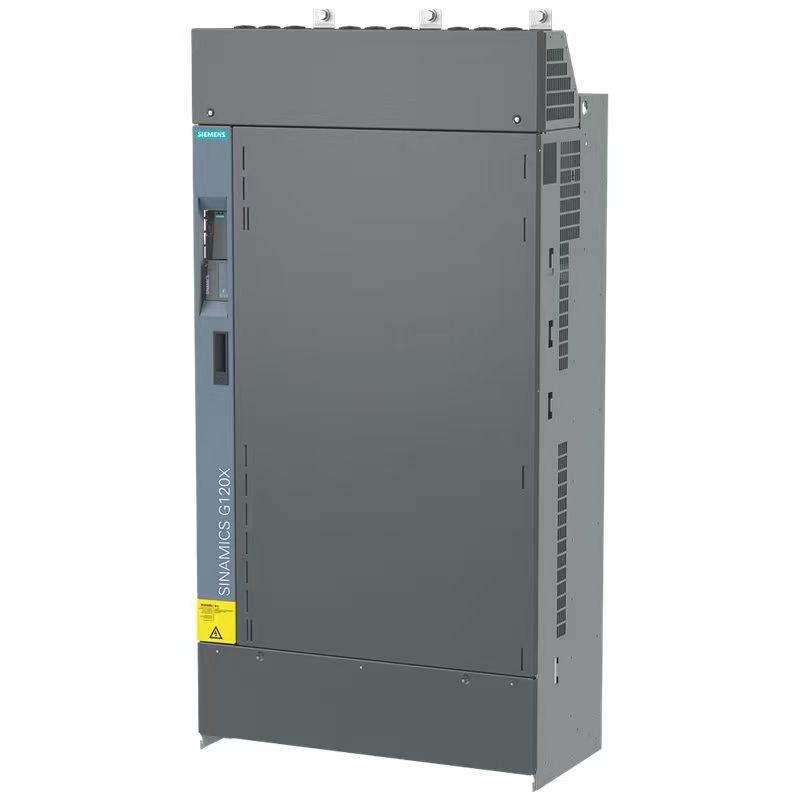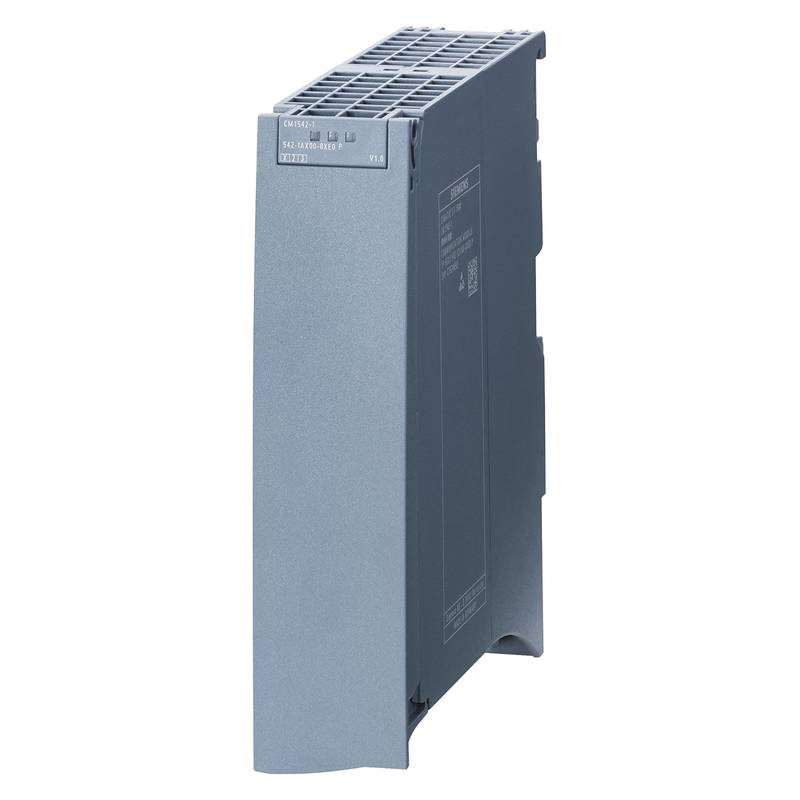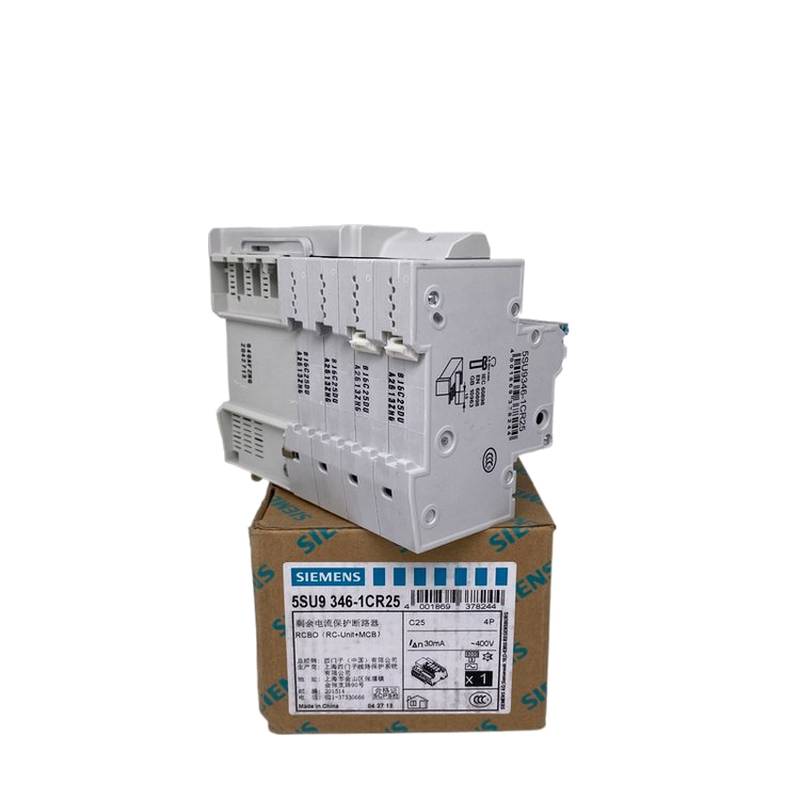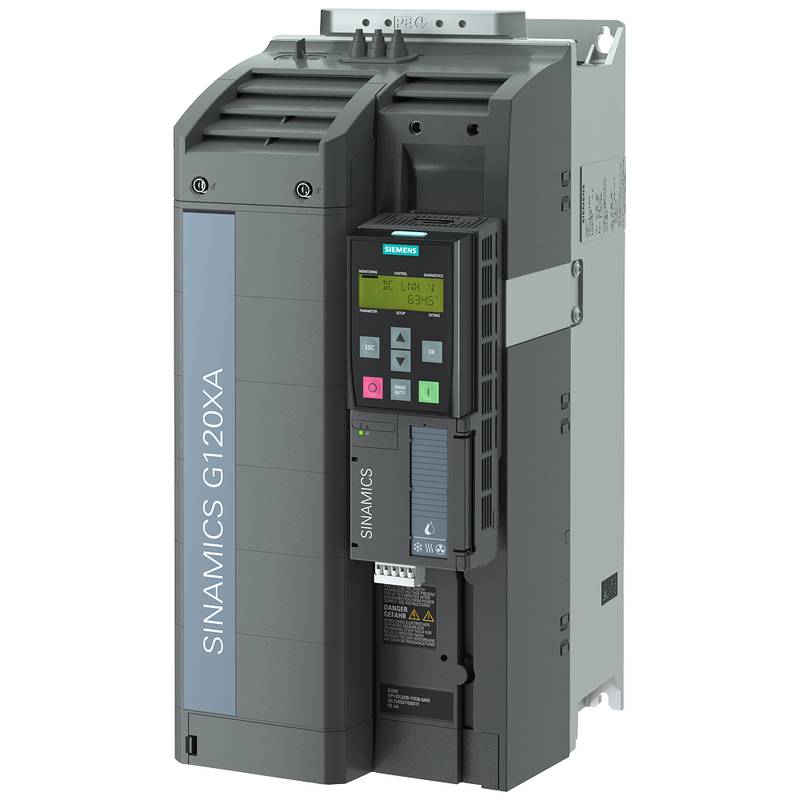
The SIMPHOENIX DL100-4T0007B Variable Frequency Drive (VFD) is engineered for precision machining equipment, delivering 0.75kW of power with exceptional control and reliability. Its advanced design ensures smooth acceleration, deceleration, and precise speed regulation, critical for high-accuracy manufacturing processes. Key technical parameters include a rated power of 0.75kW, input voltage compatibility of 3-phase 380-440V AC, and an output frequency range of 0-3000Hz. The DL100-4T0007B boasts a compact footprint, a user-friendly interface, and robust overload protection, making it an ideal solution for demanding industrial applications where performance and efficiency are paramount.
Product Specifications
| Parameter | Specification |
| :----------------- | :----------------------------------------------- |
| Model | DL100-4T0007B |
| Rated Power | 0.75kW (1HP) |
| Input Voltage | 3-Phase 380-440V AC |
| Output Frequency | 0-3000Hz |
| Output Voltage | 3-Phase 380-440V AC |
| Control Method | Sensorless Vector Control, V/f Control |
| Protection Class | IP20 |
| Mounting Type | Wall-mount/Din-rail |
| Dimensions (WxHxD) | 76mm x 150mm x 135mm |
| Ambient Temperature| -10°C to 40°C (derating above 40°C) |
| Communication | RS485 (Modbus) |
Core Features & Market Positioning
The SIMPHOENIX DL100-4T0007B distinguishes itself through its high-performance sensorless vector control, enabling precise torque and speed management even without motor encoders. This advanced control algorithm significantly enhances dynamic response and accuracy, crucial for applications like CNC machines, lathes, and milling centers where deviations can impact product quality. Its robust overload capacity (150% for 60 seconds) ensures stable operation during transient load conditions, a common challenge in machining. Positioned as a premium solution, the DL100-4T0007B competes on its ability to deliver consistent, high-precision motor control, reducing wear and tear on machinery and improving overall production efficiency, offering a compelling value proposition against less sophisticated drives.
Key Application Scenarios
This VFD is exceptionally well-suited for precision machining equipment, including CNC milling machines, lathes, and grinding machines, where exact speed and torque control are non-negotiable. Its capability for rapid response and stable operation makes it ideal for automated production lines and robotics requiring precise motion profiling. Furthermore, the SIMPHOENIX DL100-4T0007B finds application in textile machinery, packaging equipment, and printing presses that demand accurate speed synchronization and smooth operational transitions. The drive's ability to operate across a wide output frequency range (0-3000Hz) also supports high-speed spindle applications.
Practical System Integration Guidance
Integrating the SIMPHOENIX DL100-4T0007B into existing systems is streamlined due to its standard mounting options and clear terminal configurations. For installation, ensure adequate ventilation to maintain optimal operating temperatures, avoiding environments with excessive dust or corrosive vapors. Wiring should follow the schematic provided in the user manual, paying close attention to power input (L1, L2, L3), motor output (T1, T2, T3), and control signal connections. Commissioning involves parameter setup via the keypad or RS485 communication, including motor auto-tuning for sensorless vector control, setting acceleration/deceleration times, and configuring protective functions to match the specific application requirements.
Operation and Risk Mitigation
Safe operation of the SIMPHOENIX DL100-4T0007B VFD mandates adherence to electrical safety standards and proper grounding. Users must ensure all power sources are disconnected before performing any wiring or maintenance. Critical fault codes, such as E001 (Over-current) or E003 (Over-voltage), typically indicate issues with motor load, power supply, or parameter settings and require prompt investigation as per the troubleshooting guide. Overload protection, a standard feature, prevents damage during transient conditions, but prolonged operation at extreme loads should still be avoided to maximize the drive's lifespan.
Scalability & Long-Term Value
The SIMPHOENIX DL100-4T0007B offers considerable long-term value through its compatibility with standard industrial communication protocols like Modbus RTU via its RS485 interface, enabling seamless integration into SCADA and PLC-based control systems. This facilitates remote monitoring, control, and data acquisition, crucial for Industry 4.0 initiatives and predictive maintenance strategies. While the DL100-4T0007B is a robust standalone unit, its design allows for potential integration into larger automated manufacturing cells, providing a foundation for scalable solutions as production demands evolve.
FAQs
What is the primary application for the SIMPHOENIX DL100-4T0007B VFD?
This VFD is engineered for precision machining equipment like CNC machines and lathes. Its core strength lies in delivering accurate speed and torque control for demanding manufacturing tasks.
It excels in applications requiring smooth acceleration and deceleration profiles. This minimizes mechanical stress and improves product finish quality.
The drive's versatility also extends to other industrial automation scenarios needing precise motion management. Think packaging, printing, and textile machinery.
How do I connect the SIMPHOENIX DL100-4T0007B VFD to a motor?
Connect the motor's three output terminals (U, V, W or T1, T2, T3) to the corresponding VFD output terminals. Ensure proper wire gauge and insulation for the motor's power rating.
Verify that the motor's specifications (voltage, frequency, power) are within the VFD's output capabilities. Incorrect matching can lead to damage or performance issues.
Always disconnect power before making any connections. Refer to the VFD's user manual for detailed wiring diagrams and safety precautions.
What are the key technical specifications of the DL100-4T0007B?
It features a 0.75kW rated power and supports a 3-phase 380-440V AC input voltage. The output frequency range is impressively wide, from 0 to 3000Hz.
The control method includes advanced sensorless vector control for precise torque and speed regulation. It also offers traditional V/f control for simpler applications.
Other critical specs include IP20 protection, compact dimensions, and RS485 communication for integration.
Can the SIMPHOENIX DL100-4T0007B VFD be used for high-speed spindle applications?
Yes, its 0-3000Hz output frequency range is suitable for many high-speed spindle applications. This allows for efficient operation of fast-rotating tools.
The sensorless vector control ensures stable torque even at high speeds, crucial for maintaining cutting accuracy. This optimizes material removal rates.
Careful motor selection and parameter tuning are essential to harness the full potential for high-speed operations. Consult the manual for motor compatibility.
What type of control does the SIMPHOENIX DL100-4T0007B VFD offer?
It primarily utilizes advanced sensorless vector control for precise torque and speed management. This method provides excellent dynamic performance without needing an encoder.
Additionally, it supports the traditional V/f (Voltage/Frequency) control method. This is simpler and suitable for applications where precise torque control is less critical.
The drive's flexibility in control modes makes it adaptable to a wide array of motor types and application requirements.
How do I perform initial setup and commissioning for this VFD?
Begin by ensuring correct wiring of power, motor, and control signals. Then, power up the VFD and navigate to the parameter settings menu.
Perform an auto-tuning procedure for the connected motor. This optimizes the VFD's performance based on motor characteristics, especially for sensorless vector control.
Set essential parameters like acceleration/deceleration times, maximum frequency, and any specific application functions. Save the settings and test operation under load.
What are the typical fault codes for the SIMPHOENIX DL100-4T0007B VFD?
Common fault codes include E001 (Over-current) and E003 (Over-voltage). E005 often indicates an Over-temperature fault.
E002 typically signifies an Under-voltage fault in the input power. E004 usually relates to motor overload or an excessive load condition.
Consult the user manual for a complete list of fault codes and their detailed troubleshooting steps. Proper diagnostics are key to resolving issues.
Is this VFD suitable for use in dusty or harsh industrial environments?
The SIMPHOENIX DL100-4T0007B has an IP20 protection rating. This means it is protected against solid objects larger than 12.5mm but not against dust ingress or water.
For dusty or wet environments, external enclosures or specific environmental protection measures are necessary. Proper ventilation must also be maintained.
It's best suited for clean to moderately dusty industrial settings or when installed within a protected control cabinet.
What are the communication capabilities of the DL100-4T0007B?
The VFD features an RS485 communication port. This allows for serial communication using the Modbus RTU protocol.
This enables integration with PLCs, HMIs, and SCADA systems for remote control, monitoring, and parameter adjustments. It's key for automation.
This communication capability is vital for advanced process control and data logging in modern industrial settings.
What is the warranty period for the SIMPHOENIX DL100-4T0007B?
Warranty information for specific industrial products like the SIMPHOENIX DL100-4T0007B typically varies by region and distributor. It is essential to check with your authorized SIMPHOENIX dealer or reseller.
Generally, industrial VFDs come with a standard manufacturer's warranty, often ranging from 12 to 24 months from the date of purchase. This covers defects in materials and workmanship.
Always retain your proof of purchase and the product's serial number. Contacting the seller directly is the most effective way to ascertain warranty terms and initiate claims.
























